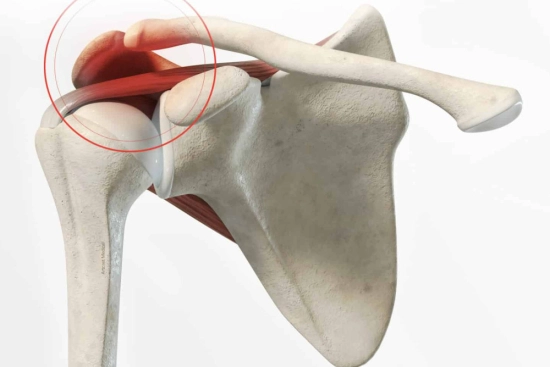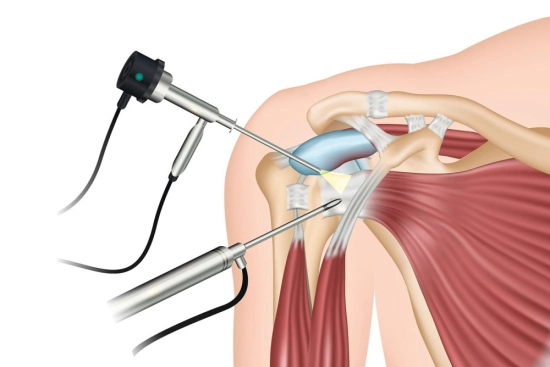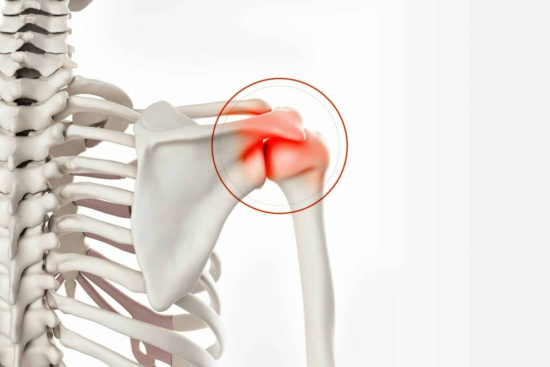Subacromial impingement of the shoulder, commonly known as impingement syndrome, occurs when the space between the humerus and the acromion narrows, causing irritation of the surrounding soft tissues.
This chronic inflammation causes pain and limits the shoulder's range of motion.
People who suffer from :
- Acute pain in the shoulder, often with certain movements (lifting the arm, carrying loads, sleeping on the side).
- A feeling of cracking or locking of the shoulder.
- Shoulder weakness.
- Acromioplasty: Between 30 and 60 minutes.
Best Clinics with Verified Reviews

- Multispecialized hospital
- 7 operating rooms
- Capacity é of 170 beds

- Multispecialized hospital
- Hospital founded in 2007
- Very good reputation in ENT department
Symptoms of subacromial impingement of the shoulder
Subacromial impingement generally presents as localized pain in the anterior and lateral aspect of the shoulder that increases with overhead motion. This pain may be accompanied by joint stiffness that limits range of motion and muscle weakness, especially during external arm rotation.
In addition, some patients report a creaking or grinding noise in the shoulder with certain movements.
Causes of subacromial impingement of the shoulder
Subacromial impingement is caused by a pinching of the rotator cuff tendons under the acromion.
This phenomenon is often related to a combination of anatomical factors (acromion shape, reduced subacromial space) and mechanical factors (repetitive movements, poor posture).
Repeated microtrauma leads to tissue inflammation and scarring, further reducing the available space and exacerbating the conflict.

Conservative treatment of subacromial impingement
Conservative treatment is the preferred first-line treatment for subacromial impingement of the shoulder. They include:
Physical therapy (Rehabilitation program)
A personalized rehabilitation program is designed to:
- Restore full range of motion to the shoulder, which is essential to regain normal function.
- Strengthen stabilizing muscles to optimize joint support and prevent recurrence.
- Improve posture to reduce stress on the shoulder and promote proper alignment.
- Educate the patient on joint-friendly daily habits to prevent pain and limitations.
Specific exercises adapted to each stage of rehabilitation help stretch tight muscles, strengthen weak ones, and restore optimal coordination.
The length of rehabilitation varies depending on the severity of symptoms and the individual's response to treatment. The acute phase may last several weeks, followed by a convalescent phase that may last several months.
Medication treatment
Medical treatment for subacromial impingement includes:
- Nonsteroidal anti-inflammatory drugs (NSAIDs): help reduce pain and inflammation by inhibiting the production of certain substances responsible for these symptoms.
- Analgesics: relieve pain.
- Corticosteroid infiltrations: Reduce local inflammation and provide quick but temporary relief.
Other conservative treatments
Other techniques may help relieve subacromial shoulder impingement:
- Shock waves: Promote healing and reduce pain.
- Manual therapy: Improves joint mobility and reduces pain.
- Acupuncture: Reduces pain and inflammation by stimulating specific points on the body.
Surgery: A last resort
If conservative treatments do not provide lasting relief from shoulder pain caused by subacromial impingement, surgery may be considered. The main goal of this surgery is to decompress the space where the shoulder tendons slide in order to reduce the friction and inflammation that cause the pain.
Acromioplasty: an effective solution
The most common procedure is acromioplasty. This involves removing a small portion of the acromion bone that is compressing the tendons to create more space.
- Arthroscopy: In most cases, acromioplasty is performed using arthroscopy, a minimally invasive technique that requires small incisions. This allows for faster recovery and less visible scarring.
- Open surgery: In special cases, open surgery may be necessary.
Other possible procedures
Depending on the exact source of the pain and the condition of the tendons, other surgical procedures may be performed in conjunction with acromioplasty:
- Decompression of the long biceps tendon: If this tendon is also the cause of the pain, it may be decompressed during surgery.
- Rotator cuff repair: If the cuff tendons are partially or completely torn, repair can be performed at the same time as acromioplasty.

Postoperative follow-up
Postoperative recovery from subacromial impingement surgery requires intensive rehabilitation tailored to each patient. The main goals of this rehabilitation are:
- Reduce pain and inflammation.
- Restore shoulder range of motion.
- Strengthen stabilizing muscles.
- Allow gradual return to daily activities and sports.
Rehabilitation can last from several months to a year.
Share this page






